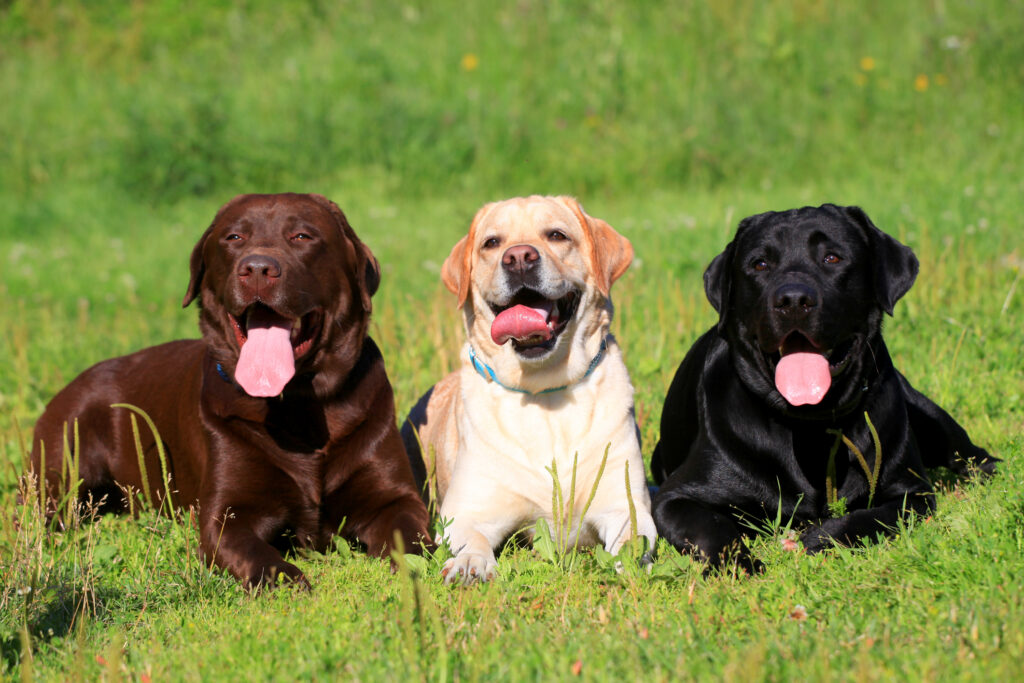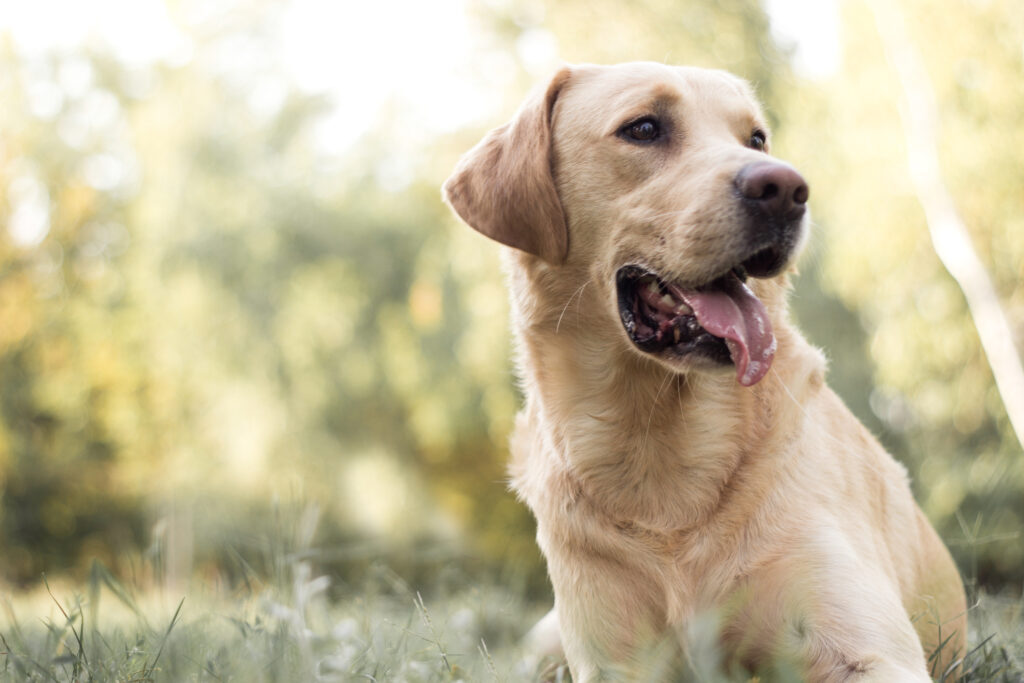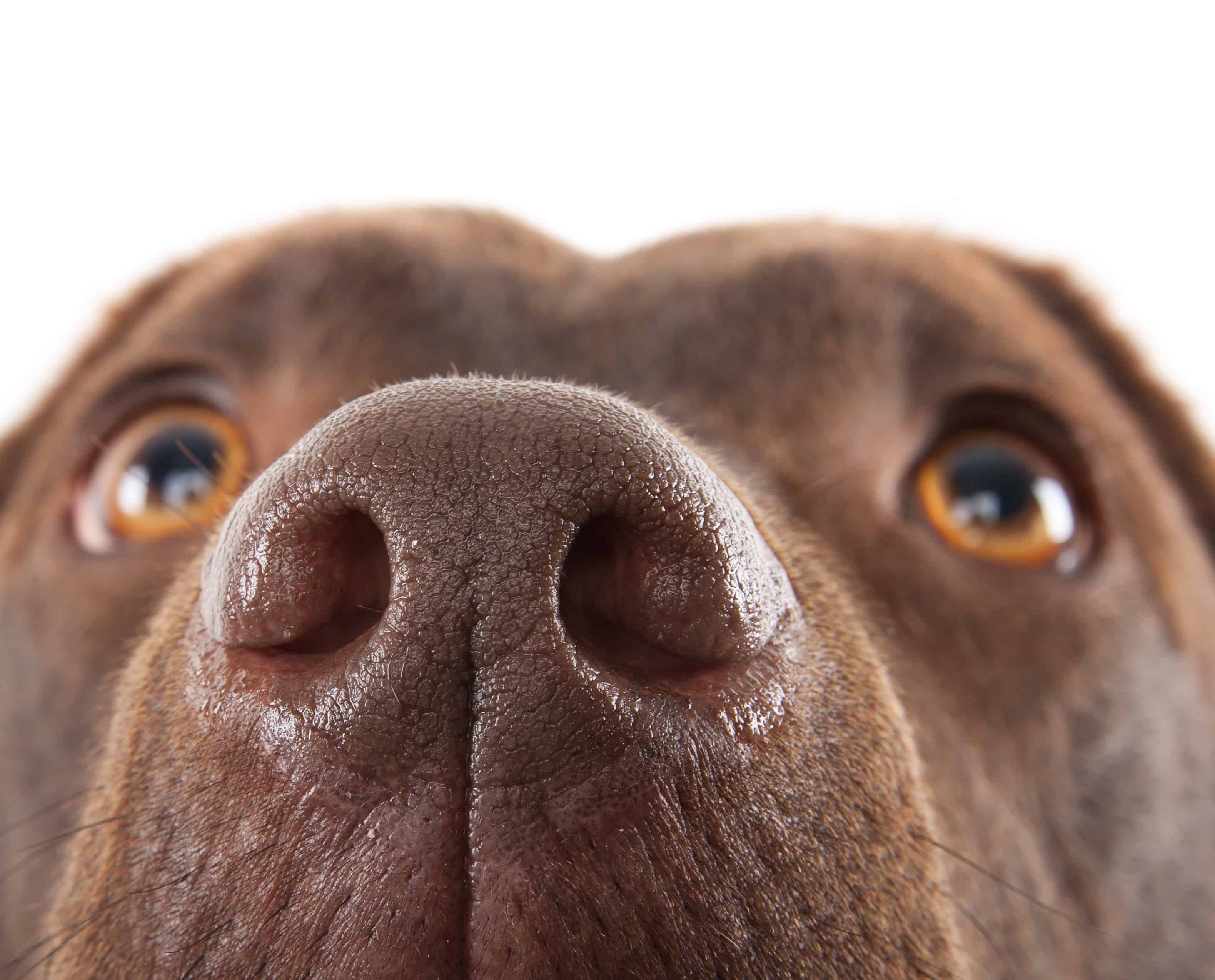The Labrador Retriever – also known simply as the Labrador or Lab – is the most popular dog breed in the United States. Labs are also one of the most popular dog breeds in the world, ranking third in our 2019 analysis. They are easily recognized by their sweet face and high-energy demeanor.
Dating back to at least the 1830s, there are plenty of reasons why this dog breed is so popular. Labrador Retrievers are very loyal companions. They make great family dogs as they are gentle with kids, playful, and very intelligent.
In this article, we will look at the breed characteristics of the Labrador Retriever, explain where they originated, provide a short history of the breed up to the modern day, and answer commonly asked questions about the breed.
Labrador Retriever breed characteristics
- Labradors are a medium-to-large sized dog. Females weigh 55 to 70 pounds and males between 65 to 80 pounds. While females can stand 21 to 23 inches tall, males can reach between 22.5 inches and 24.5 inches.
- The breed is extremely intelligent and are working dogs. Labrador Retrievers can make great tracking, detection, hunting, or service dogs.
- Originally bred to be water dogs, the Labrador Retriever is a superb swimmer and loves getting wet.
- The Labrador is very friendly with strangers, easy-to-train, even-tempered, and isn’t prone to being aggressive.
- Labradors come in three main colors—black, chocolate, and gold. The gold can be pale yellow to fox red to whitish yellow. Some owners see personality differences in different colors of Labrador Retrievers. It is said that yellow Labradors are sweet and calm, while black Labradors are patient and active, and chocolate Labradors are a little fierce and noisy.
- The breed has a double-coat. The outer coat is dense and has straight hair covering the soft and waterproof undercoat.
- Labrador Retrievers have a wide head with a thick tail to help them guide in the water. Their ability to tolerate cold water for long periods of time makes them one of the best swimming dogs.

A short history of the Labrador Retriever
The Labrador Retriever dates back to at least the 1500s. The breed was first introduced in Newfoundland, Canada. During this time, small water dogs were bred with the Newfoundland dog breed to be a new breed called the St. John’s Water Dog or the Lesser Newfoundland. These dogs were owned by fishermen in the area to jump into icy water to bring fish that fell off their hooks.
Although there were different breeds of dogs similar to the Labrador Retriever, the breed kept living in Newfoundland until the 1830s. The Labrador Retriever was then imported to Poole, England. The Earl of Malmesbury saw the Labrador Retriever and immediately brought him home. This led to Labradors becoming increasingly popular in England over time.
The British sportsman and soldier Colonel Peter Hawker described the breed as being not larger than an English Pointer, long in its head and nose with a deep chest; more often black than other colors; having a short and smooth coat; agile and quick; and adept at swimming.
By the 1870s, the Labrador became very popular in England and was called the Labrador Retriever. In 1899, the first yellow Labrador Retriever was born and the breed was recognized by The Kennel Club in 1903.
Following The Kennel Club’s recognition, the American Kennel Club recognized the breed in 1917. The breed regularly features on lists of the most popular registered breeds in the United States; the Labrador Retriever has been the most popular dog in America since 1991.

Modern Utilization of the Labrador Retriever
The Labrador Retriever is a working dog with a strong work ethic. It is normal to spot them working in a wide range of fields. The most common working role of Labrador Retrievers is working as guide dogs. In fact, more than 60% of guide dogs around the world are Labrador Retrievers.
However, the modern utilization of Labrador Retrievers isn’t limited to service dog work. You can expect to see Labradors work in carting, detection, therapy, and even search and rescue activities such as tracking.
Labrador Retrievers’ intelligence and trainability can allow them to work alongside hunters for marking where the birds fall and retrieving dead birds using their nose. Their quiet nature while engaging in these pursuits make them a great assistant of hunters.

Commonly asked Labrador Retriever Questions
What is the average lifespan of a Labrador?
Labradors are one of the longest-living dog breeds. The median longevity for a Labrador is about 10 to 14 years. The color of the Labrador can also play a role in lifespan. On average, chocolate Labradors live between 10 to 11 years.
How fast can a Labrador run?
Undoubtedly, Labradors are very fit and athletic dogs. This allows them to run up to 20 to 30 miles per hour. With proper exercise and physical training, Labradors can easily reach a top running speed of 30 miles per hour.
When is a Labrador fully grown?
The Labrador is a fast maturing breed. Labradors reach their fully grown height from 6 to 12 months but still fill up to 2 years of age. A method of figuring out how big a Labrador puppy will eventually get is by doubling the size once 16 weeks old. This is also known as the times two formula (but isn’t specific to Labradors).
How long does a Labrador’s pregnancy last?
The duration of pregnancy in Labradors are pretty much the same as all the other dog breeds. Typically, pregnancy in dogs last between 56 to 68 days. The heat cycles vary from breed to breed, including in Labradors but the gestation period is mostly the same for all dogs at about nine weeks.
How many puppies can a Labrador have?
A Labrador can have six to twelve puppies. It’s isn’t uncommon at all for a Labrador to have more than ten puppies, but on average, six to eight puppies are more common.
What are common Labrador health conditions?
Labradors mainly suffer from joint problems like elbow or hip dysplasia. This causes them pain, immobility and prohibits normal movement. Maintaining a healthy diet rich in nutrients and vitamins with proper exercise can help prevent these ailments. Other than dysplasia, bloating, ear infections, and heart diseases are common.
Are Labradors aggressive dogs?
Labradors are laid back, friendly and patient. Being aggressive or being prone to attacking isn’t expected from them at all which makes them the perfect pet for a child. Just like any other dog breed, Labradors may become aggressive if they feel in danger or see a threat to the family.


You must be logged in to post a comment.